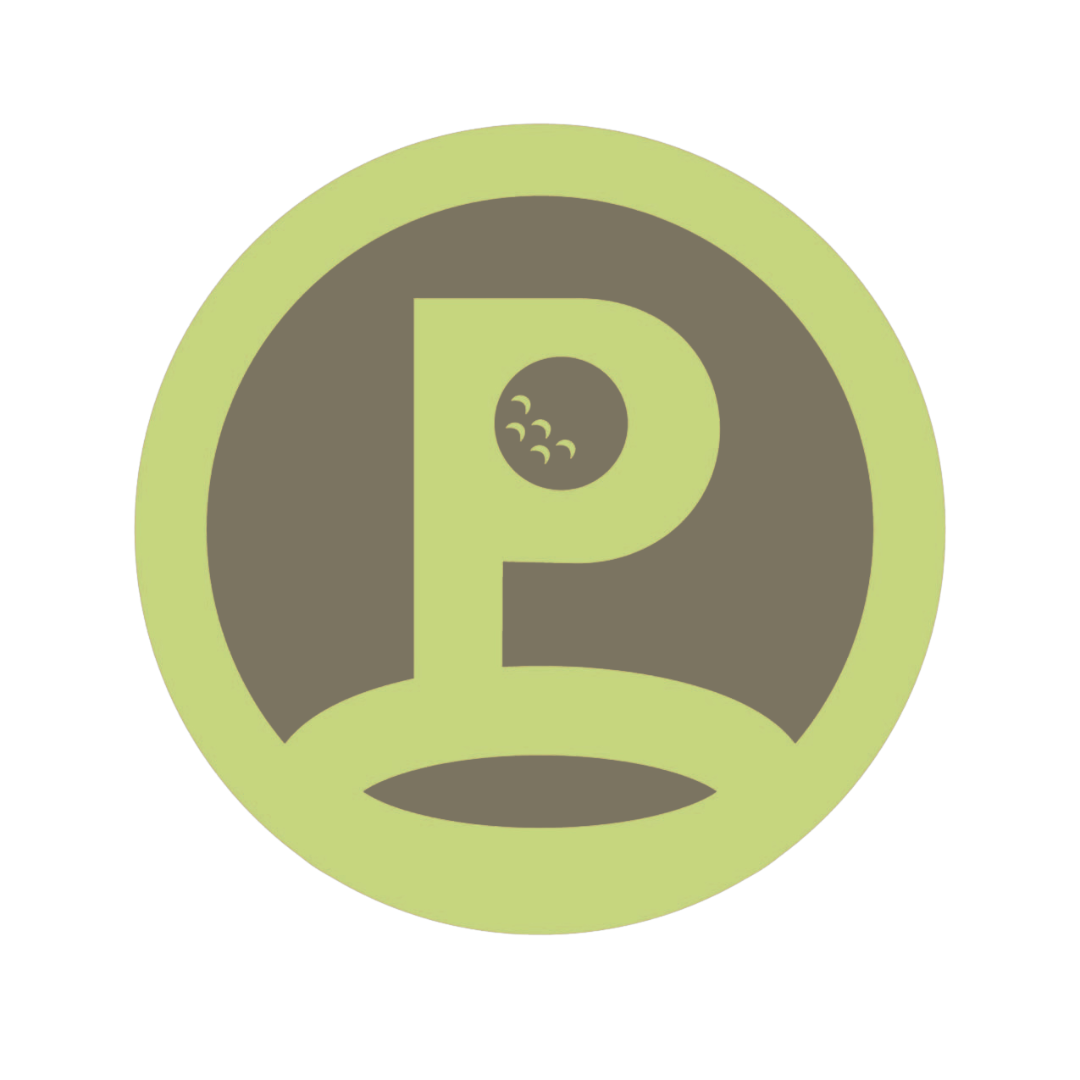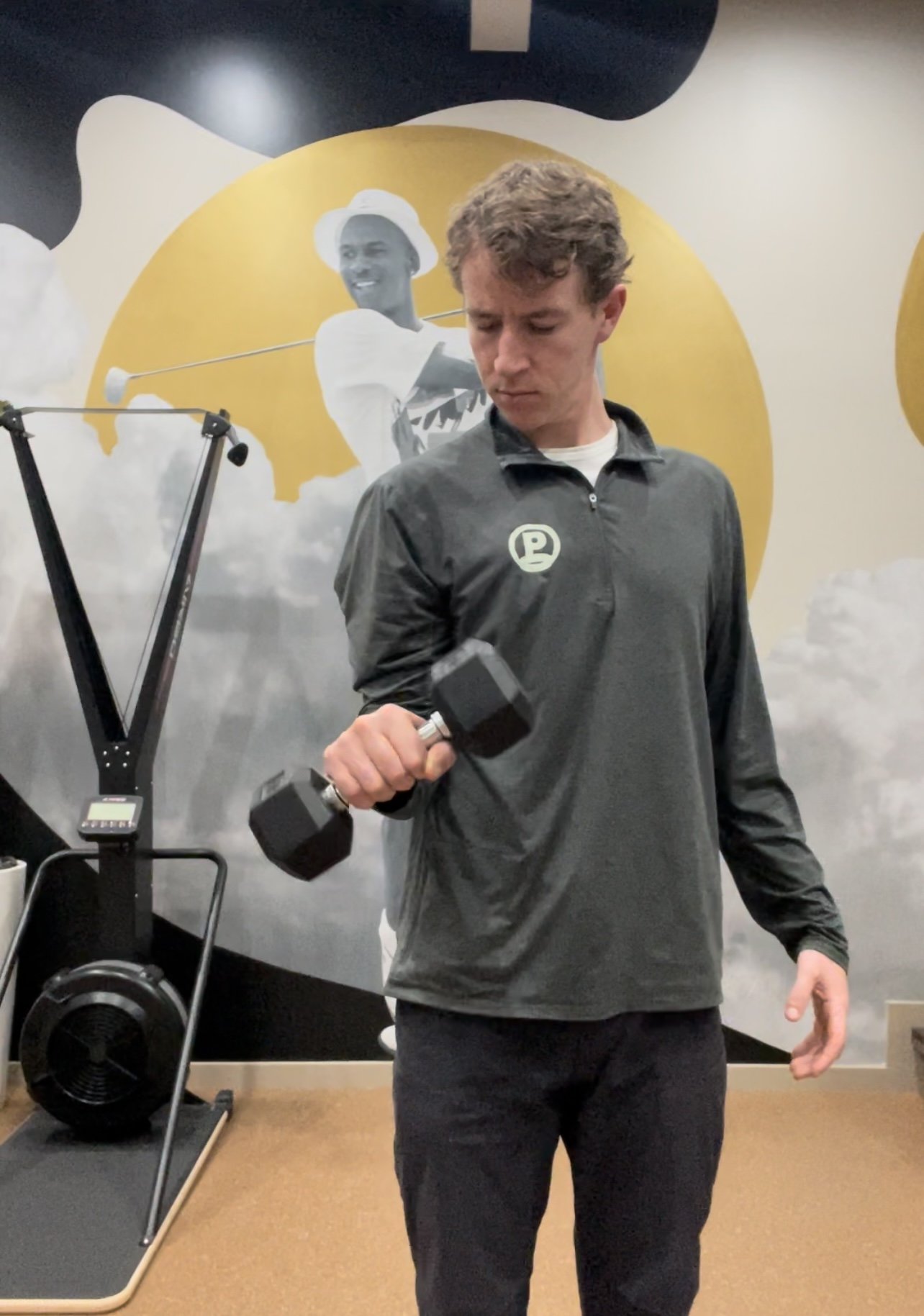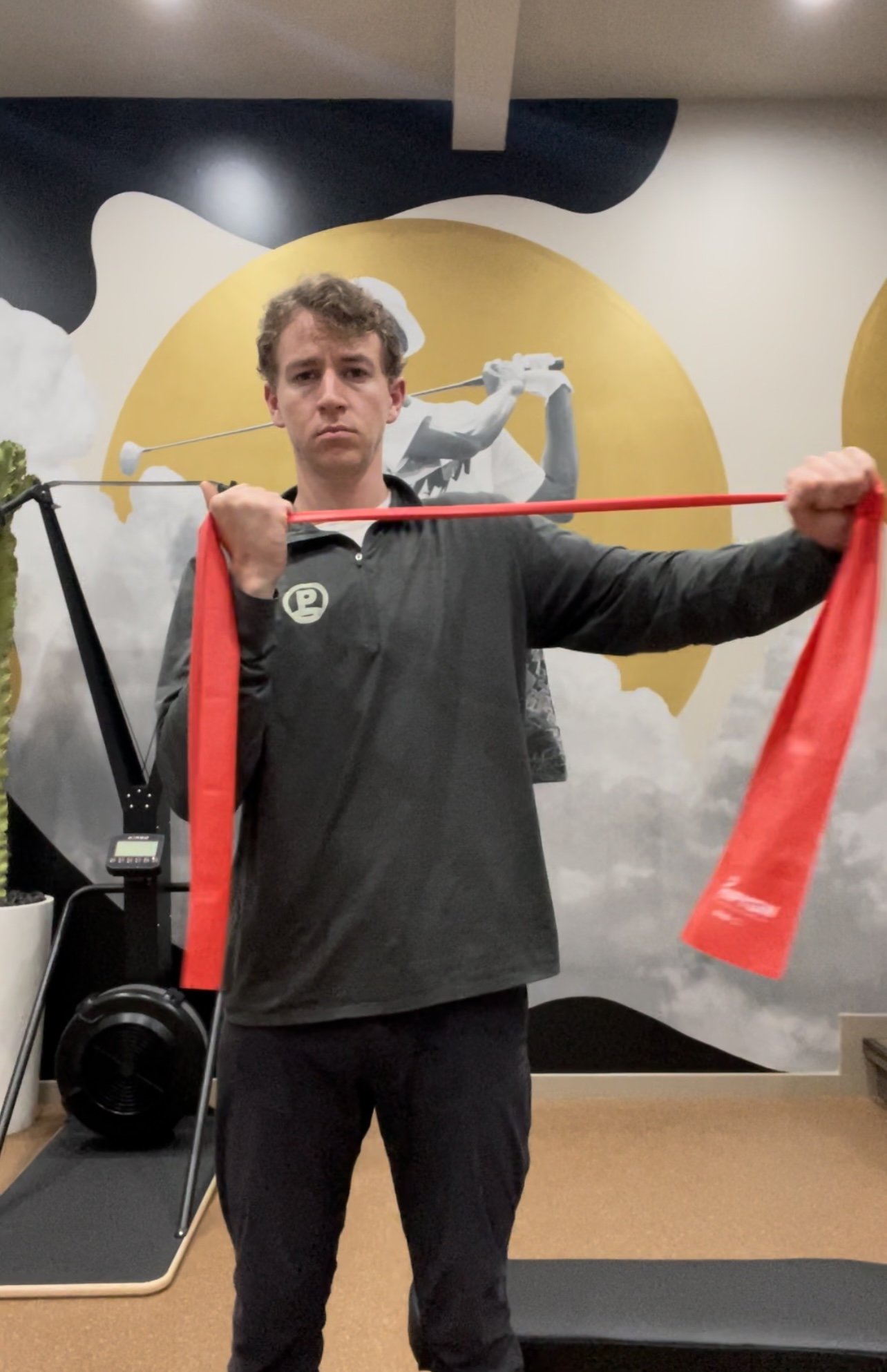How To Treat Golfer’s Elbows And 8 Golfers' Elbow Exercises
You're not alone if you are wondering how to treat golfers' elbows. Golfers' elbow exercises can be a game-changer in your journey toward relieving that nagging pain. But before we dive into therapeutic movements and stretches, starting with the basics is crucial.
Your first step? Seek professional guidance from a medical expert who can accurately diagnose your condition. Once armed with a precise diagnosis, you'll be better equipped to embark on recovery. That's where a specialist comes in, someone who can tailor a treatment plan specifically for your elbow.
In this comprehensive article, we're here to guide you through understanding, managing, and ultimately conquering golfers' elbows. We'll even share expert insights and exercises straight from the desk of Dr. Krystal Drwencke, DC, a renowned authority at Ascent Sports Chiropractic.
Get ready to tee off on your journey to elbow wellness!
Table Of Contents
What is a Golfer's Elbow?
What Causes Golfer's Elbow?
The Most Common Causes of Golfers' Elbow
How Do I Know If I Have a Golfer's Elbow?
Prevention of Golfers' Elbow
Golfers Elbow Treatment Considerations: The Kinetic Chain
By Dr. Krystal Drwencke, DC - Ascent Sports Chiropractic
Physical Therapy and Rehabilitation
Drug Treatments
Ultrasound and Surgery
Golfers' Elbow Exercises
Everyday Exercises for Reducing Inflammation in Your Elbow
Golf Elbow Wrist Flexor Stretch
Wrist Extensor Stretch
Shoulder and Elbow Stretches With Weight or Assistance
Forearm Pronation and Supination
Elbow Flexion and Extension
Eccentric Wrist Curls
Shoulder and Elbow Exercises
Ball Squeeze
TheraBand FlexBar Twist
Stretching Band Wrist Extension
Golfer's Elbow Recovery Time
What is a Golfer's Elbow?
Area of Golfers Elbow (Lmh.org. 2022)
The injury is called Medial Epicondylitis in medical terms and sometimes tennis elbow. Enough stress on the tendons can cause microtears in the tendons, and tendonitis can arise (Kiel, J. and Kaiser, K., 2022). Tendinitis is an inflammation of the tendons where the tendons are the bands of tissue that join muscle groups to the bones. The injury can cause pain and inflammation in the elbow, making it difficult to swing the golf club.
What Causes Golfer's Elbow?
The injury is caused by repetitive movements that pressure the tendons and the muscles in the elbow (Kiel, J. and Kaiser, K., 2022).
The pain can result from numerous factors, such as improper swing technique or playing on a course with excessive elevation changes.
Sports like golfing, tennis, American football, bowling, and other activities require repetitive moves due to extreme strength forces throughout the acceleration phase. In golfers, it occurs from the top of the backswing to just before the ball impacts the golf club.
The Most Common Causes of Golfers' Elbow
Training Errors
One possible cause of the golfer's elbow is training errors. It can occur when someone incorrectly trains their muscles, leading to pain and inflammation around the elbow joint.
The Wrong Technique
When the golfer makes a backswing, they often hyperextend their elbow, leading to damage because the muscles and tendons in the arm are not strong enough to support the arm's weight when extended.
The Wrong Equipment
It can include using clubs that are too heavy or grips that are too tight. Ensure that your equipment is correctly fitted before starting long sessions.
Lack of Strength
A lack of strength in the muscles that control the wrist and fingers is a potential explanation for the golfer's elbow. It can lead to ulnar neuropathy, in which the ulnar nerve becomes compressed as it passes through the cubital tunnel of the elbow.
Lack of Flexibility
Golfer’s elbow can result from a lack of flexibility in the elbow joint's muscles and tendons. Incorporating warm-up and cool-down stretches and exercises into your golfing routine is essential.
How Do I Know If I Have a Golfer's Elbow?
The most common symptoms of golfers' elbows are pain and tenderness inside the elbow. You should seek medical attention from a doctor or specialist because they will likely perform an MRI or other diagnostic tests to determine the source of pain.
Common symptoms of golfer's elbow, as outlined by Kiel and Kaiser (2022), include:
Aching pain is located on the side of the elbow and may radiate toward the wrist and forearm.
Increased pain was experienced during activities involving motion, gripping, and throwing.
Pain relief when the arm is at rest, as wrist pain worsens with elbow movement. Consider using an elbow brace for nighttime support.
Persistent discomfort when making a fist or straightening your arm.
Difficulty in fully extending your arm above your shoulder and head.
A sensation of heaviness or tightness in the joint when moving the affected arm.
Swelling and redness in the joint and elbow area.
A history of anterior cruciate ligament (ACL) injuries in family members or friends may also be relevant.
Prevention of Golfers' Elbow
Stokard (2001) explained that you could prevent injuries by practicing and developing proper swing mechanics with a golf professional. They can help you correct your form while building your muscle memory. Thus, hitting a golf ball multiple times in a day can cause “repetitive microtrauma-type injuries.”
Stockard also listed the most common golf injuries for amateurs and professionals, where amateurs have lower back and elbow injuries, and professionals have left wrist and lower back injuries (Stockard, A. 2001).
Golfers Elbow Treatment Considerations: The Kinetic Chain
By Dr. Krystal Drwencke, DC - Ascent Sports Chiropractic
If self or conservative treatment fails to improve Golfer's Elbow, we must start to look at the whole kinetic chain. A weakness in the same shoulder will often be caused by degeneration of the nerves from the neck or cervical spine. Pain in the elbow can also mask a shoulder labrum tear, shoulder instability, or weakness of degeneration of the wrist or carpal tunnel.
These kinetic chain issues can be caused by poor posture, spending time at a desk, using a keyboard or mouse, etc.
A proper assessment utilizing testing each muscle of the shoulder, arm, and wrist can help dictate appropriate rehab strategies and help monitor the progression of the injury. Once baseline strength has returned, we must retrain the golf swing and movement patterns. When in doubt, get assessed by a professional who works with extremities.
Physical Therapy and Rehabilitation
After the first and acute symptoms are gone or decreased, one should focus on targeted exercises to strengthen and stretch. The goal is to return to a full range of motion (ROM); the movements will determine what stage of rehabilitation the patient is in (Amin, N. et al., 2015)
Drug Treatments
Non-steroidal and anti-inflammatory drugs, including acetaminophen, can help lower the pain and use ice right after an activity” (Kiel, J. and Kaiser, K., 2022).
Ultrasound and Surgery
If the pain does not go away, you might need an ultrasound to see if you need surgery to treat the injury.
There have been cases where people have had botox injections, but this is an off-label treatment. “Surgical management includes the release of the common flexor tendon at the epicondyle and debridement of pathologic tissue” (Kiel, J. and Kaiser, K., 2022).
Golfers' Elbow Exercises
There are many reasons why golfers' elbow exercises are essential. The first reason is that the exercises help improve the strength and flexibility of the forearm muscles and tendons because they help reduce the risk of injury when playing golf.
The second reason is that the exercises can help to relieve pain and inflammation in the elbow joint. Finally, the exercises can help to improve your golf game by improving your grip strength and accuracy.
Everyday Exercises for Reducing Inflammation in Your Elbow
Daily light stretching exercises are one of the most effective ways to alleviate inflammation in your elbow. These exercises help keep your tendons and tissues supple by maintaining motion. However, it's essential to consult a chiropractor or medical professional to determine which exercises best suit your condition.
1. Golf Elbow Wrist Flexor Stretch
Begin by either standing or sitting with your back straight.
Extend your affected arm in front of you, with your palm facing downward.
Use your opposite hand to gently pull the fingers of your extended hand toward your body.
Continue pulling until you feel a noticeable stretch in your forearm.
Hold this stretching position for 30 seconds.
Repeat this stretch three times for each arm.
This particular stretch is highly beneficial for improving flexibility and releasing tension in the wrist flexor muscles, which can contribute to golfers' elbows.
2. Wrist Extensor Stretch
Like the previous stretch, extend your affected arm before you.
This time, turn your palm upward, facing the ceiling.
Use your opposite hand to gently pull your fingers back, creating a stretch in the wrist extensor muscles.
Maintain this stretch for 30 seconds.
Repeat the stretch three times for each arm.
These exercise helps prevent overuse injuries and enhances overall wrist mobility. It's particularly effective for maintaining the health of your wrist extensor muscles, which can play a crucial role in managing golfers' elbow symptoms.
Shoulder and Elbow Stretches With Weight or Assistance
When it comes to stretching, sometimes adding a bit of weight or assistance can provide the extra push needed to reach your desired range of motion (ROM). However, exercising caution and not overdoing it is essential, as excessive weight can potentially exacerbate your condition.
3. Forearm Pronation and Supination
This exercise is specifically designed to strengthen the muscles responsible for forearm rotation. Improved forearm rotation is crucial for generating power during your golf swing.
Begin by holding a light dumbbell or a weighted object like a hammer with your affected arm.
Keep your palm facing downwards.
Slowly rotate your forearm to bring your palm upwards.
After reaching the maximum comfortable position, rotate it back to the starting position.
Perform 3 sets of 10 reps for each arm.
4. Elbow Flexion and Extension
Elbow flexion and extension exercises are excellent for building strength in your biceps and triceps. These exercises contribute to stability during your golf swing.
Sit on a chair or stand with your feet shoulder-width apart.
Hold a dumbbell in your hand with your palm facing upwards.
Gradually bend your elbow to bring the dumbbell toward your shoulder.
Slowly lower it back to the starting position.
Perform 3 sets of 12 reps for each arm.
5. Eccentric Wrist Curls
Eccentric wrist curls are particularly effective for rehabilitating golf elbow and rebuilding strength in the affected muscles. This exercise focuses on the controlled lengthening of the wrist muscles, aiding in the healing process for golfers' elbows.
Sit on a bench or a chair with your forearm resting on a table.
Keep your palm facing upward and hold a light dumbbell in your hand.
Allow your wrist to bend slowly.
Use your unaffected hand to assist in lifting the weight back to the starting position.
Perform 3 sets of 12 reps for each arm.
Shoulder and Elbow Exercises
6. Ball Squeeze
Ball squeezes primarily target the forearm muscles and help improve grip strength. A firm grip is essential for securely holding the golf club and can aid in reducing strain on the elbows.
To perform this exercise, you'll need a stress or tennis ball.
Begin by firmly squeezing the ball in your hand for approximately 5 seconds, applying consistent pressure.
Release the grip and relax your hand.
Repeat this exercise for 3 sets, with 15 repetitions on each hand.
7. TheraBand FlexBar Twist
The TheraBand FlexBar twist exercise is designed to strengthen the forearm muscles, which can assist in relieving discomfort associated with golfers' elbows. This exercise helps improve forearm strength and flexibility.
For this exercise, you'll need a TheraBand FlexBar.
Grasp the FlexBar with both hands while keeping your affected arm bent at a 90-degree angle.
Twist the FlexBar using your wrist, alternately making your palm face upward and downward.
Perform 3 sets of 15 repetitions for each arm.
8. Stretching Band Wrist Extension
The stretching band wrist extension exercise focuses on strengthening the wrist extensor muscles, which can be beneficial in managing golfers' elbows. This exercise helps improve wrist stability and mobility, contributing to overall forearm strength.
To perform this exercise, you'll need a stretching band.
Begin by securing one end of the band to a stable anchor, such as a doorknob.
Hold the other end of the band with your affected hand, palm facing down.
Gradually extend your wrist by pulling the band gently.
Slowly return your wrist to the starting position.
Perform 3 sets of 15 repetitions for each arm.
Golfer's Elbow Recovery Time
The outlook for medial epicondylitis, also known as golfer's elbow, is generally positive, as supported by reputable sources:
According to Kiel and Kaiser (2022), most patients can resume their work or sports activities successfully following a combination of physical therapy and modifications to their activities.
It's essential to exercise caution during the initial six weeks of treatment since your elbow and tendons may still be sensitive to strain. As noted by Amin et al. in 2015, many patients who do not require surgical intervention can typically expect to return to their regular performance levels within a timeframe ranging from 3 to 6 months.
"If you're struggling with a golfer's elbow and need personalized assistance, we're here to help. Contact us here for expert guidance and tailored recovery plans. Let's get you back to your game with confidence!"
Sources
Lmh.org. 2022. Medial Epicondylitis (Golfer’s Elbow). [online] Available at: <https://www.lmh.org/get-care/orthokansas/elbow/medial-epicondylitis-golfers-elbow/> [Accessed 15 April 2022].
Kiel, J. and Kaiser, K., 2022. Golfers Elbow. [online] Ncbi.nlm.nih.gov. Available at: <https://www.ncbi.nlm.nih.gov/books/NBK519000/> [Accessed 15 April 2022].
Stockard, A. (2001). Elbow injuries in golf. Journal of Osteopathic Medicine, 101(9), 509-516. https://doi.org/10.7556/jaoa.2001.101.9.509
Amin, N., Kumar, N. and Schickendantz, M., 2015. Medial Epicondylitis. Journal of the American Academy of Orthopaedic Surgeons, 23(6), 348-355. https://journals.lww.com/jaaos/Fulltext/2015/06000/Medial_Epicondylitis__Evaluation_and_Management.4.aspx
Encyclopedia, M., 2022. Ulnar nerve dysfunction: MedlinePlus Medical Encyclopedia. [online] Medlineplus.gov. Available at: <https://medlineplus.gov/ency/article/000789.htm#:~:text=Ulnar%20neuropathy%20occurs%20when%20there,%22hitting%20the%20funny%20bone.%22> [Accessed 20 April 2022].










